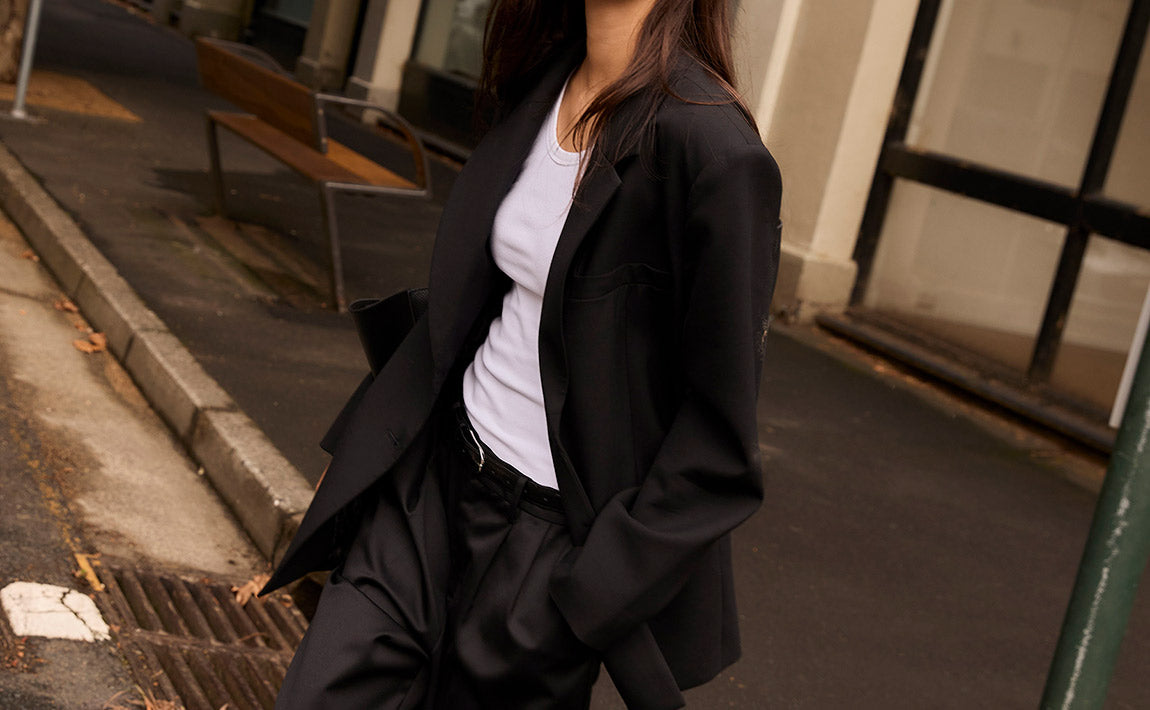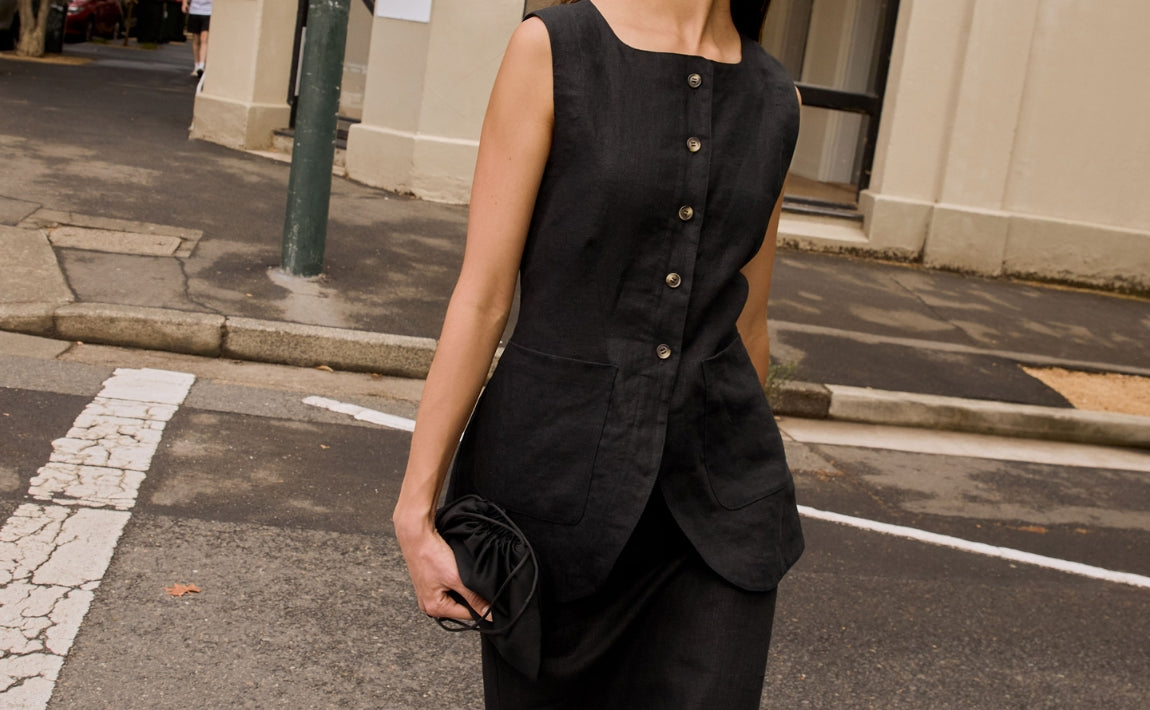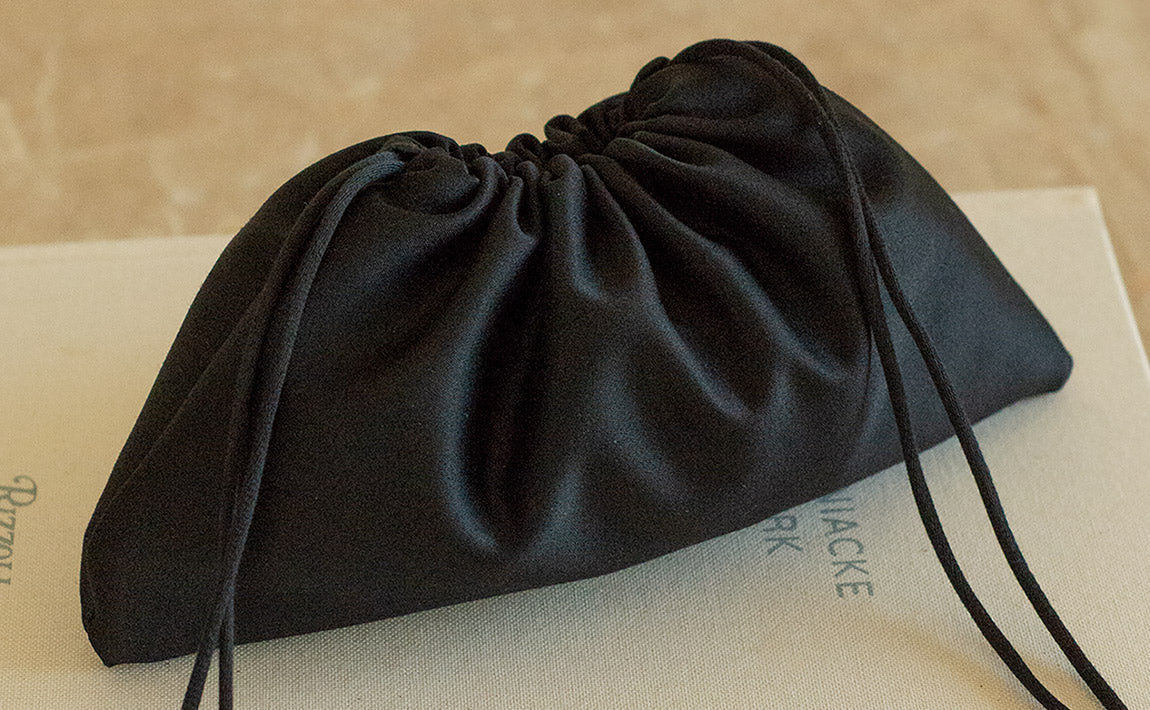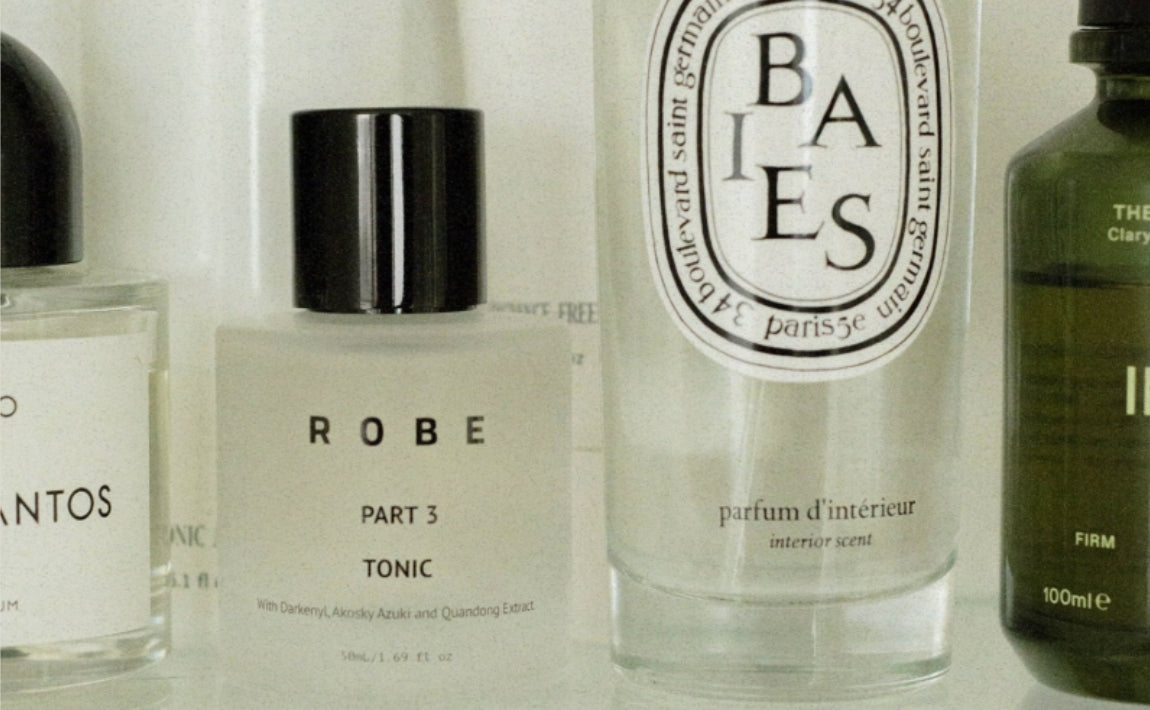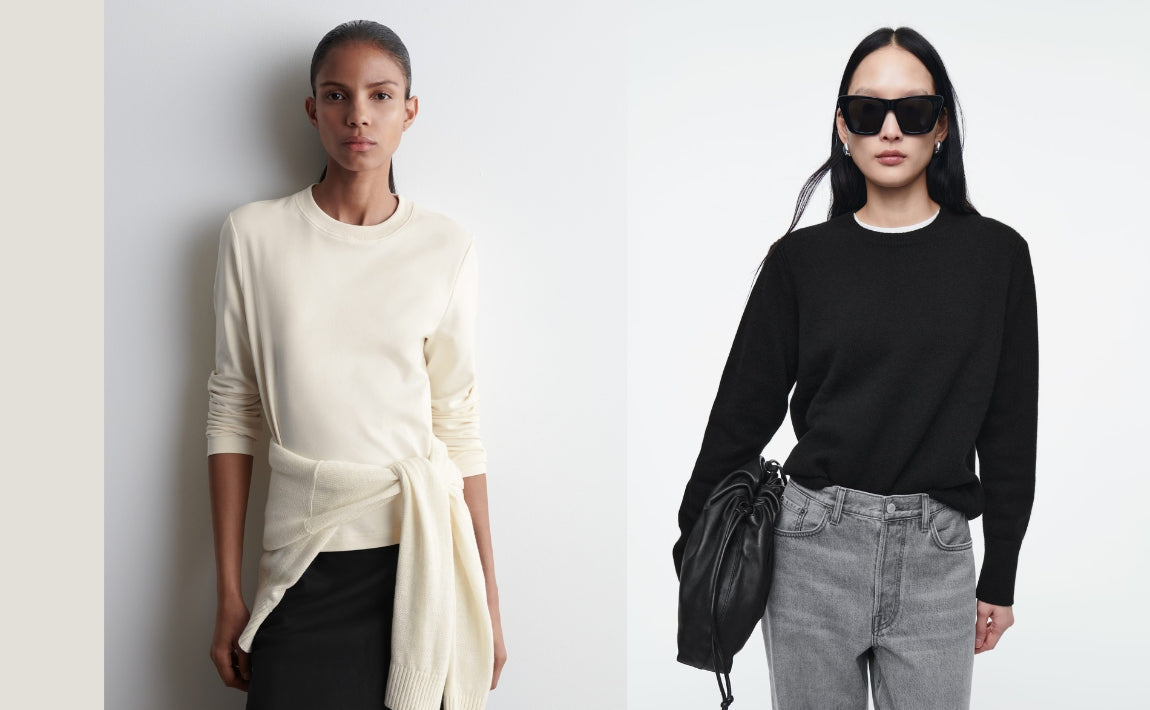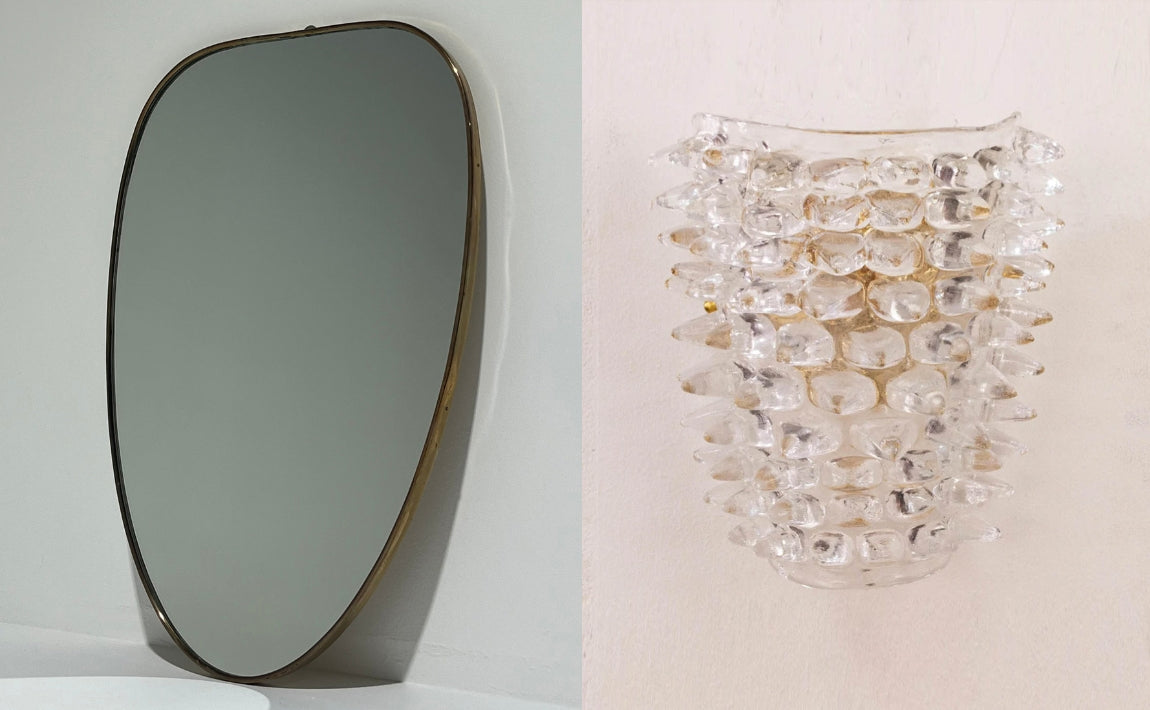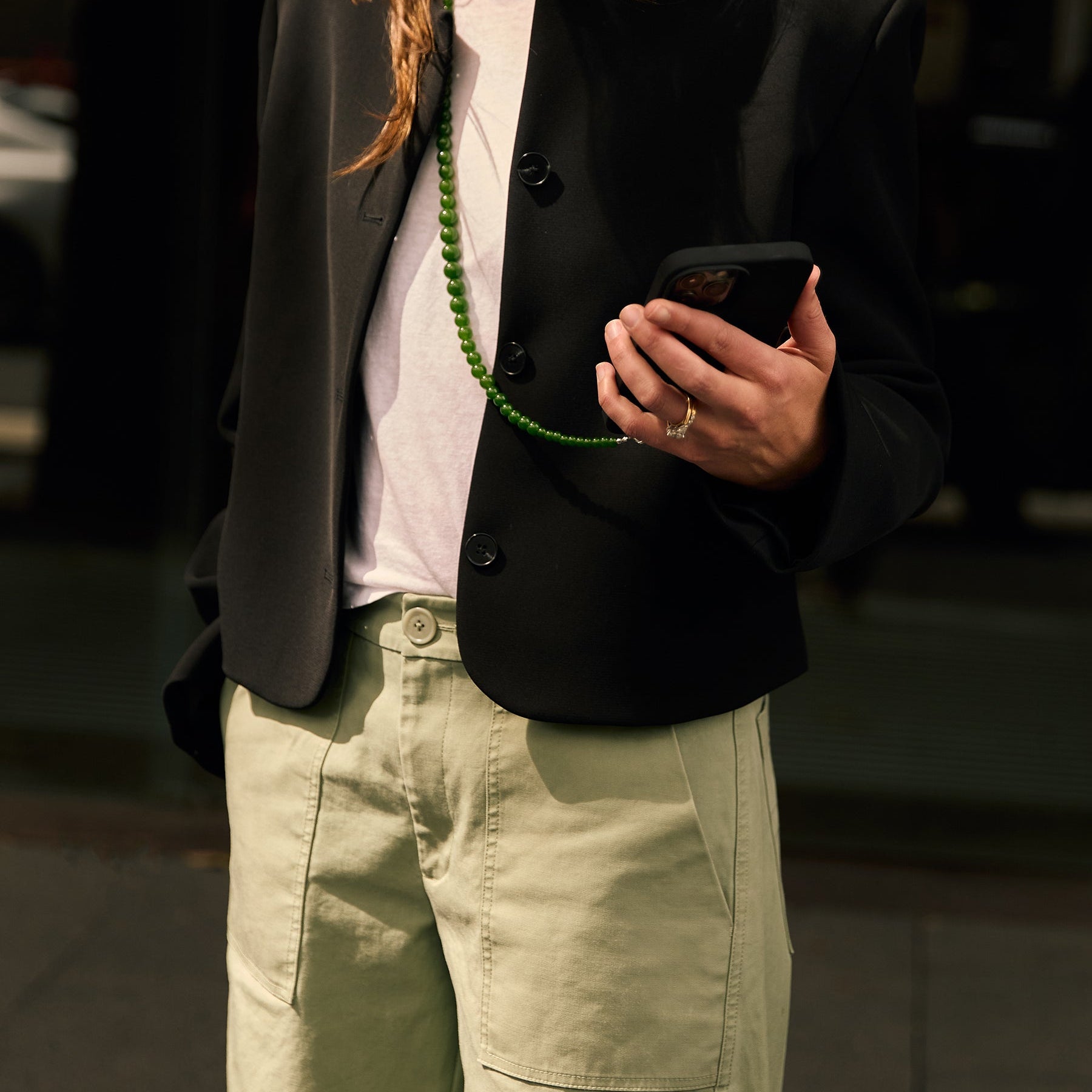The Circular Economy is Big Business

Seeking pre-loved pieces over the brand new is slowly becoming more and more commonplace, with lovers of great style and conscious consumers alike instinctively looking to garments crafted for longevity and already imbued with experience, over those that have just come into existence.
Once limited to a small collection of vintage stores, pop-up market stalls and eBay auctions, pre-loved fashion has now become so accessible that you can acquire even the rarest of pieces from the palm of your hand. It's this increased accessibility that’s shifting the behavioural tides in a big way — in 2021, Forbes reported that the global market value of resale was estimated at US$96 billion, and it’s expected to reach nearly US$233 billion by 2023 according to Vogue Business.
We’re living through the great evolution of resale.
There’s the RealReal, Vestiaire Collective, Depop (which even invites its customers to ‘Repop’ their purchases if they’re not suitable), Poshmark, Facebook groups and dedicated Instagram profiles, boutique consignment stores— the avenues to acquire pre-loved pieces, or part with clothing in what is widely understood to be a conscious way, are now seemingly endless. Even fashion giants are seeing the upsides of resale. Selfridges is one retail titan clearly aware of the attraction and importance of shopping pre-loved, launching its Reselfridges concept in late 2020.
Fashion rental is also quickly carving out its own space within the sustainable fashion industry, experiencing an equally rapid boom. US-based Rent The Runway has become so successful that it’s reporting its first year at a profit, and locally, rental service Glam Corner has spent more than a decade in business, with dozens of online marketplaces popping up in its wake. These businesses paint an optimistic picture — the global clothing rental market was already valued at $US1.12 billion in 2021, and is projected to reach $US2.33 billion by 2030.
But despite these outwardly positive statistics, there seems to still be a disconnect — between the successes of these second-life fashion businesses and the very real, very alarming state of consumerism today.
A recent report into the world’s biggest fashion consumers has made clear just how extreme our buying habits have become, and warns of the dangers of pursuing a linear approach to fashion. Australia has now surpassed the United States as “the world’s biggest consumer of textiles per capita”, with consumers buying an average of 56 new pieces of clothing per year. What’s even more concerning is the average price point of the fashion items Australians are buying: $13. With all this information at hand, it comes as no surprise that these habits have resulted in more than 200,000 tonnes of clothing ending up in landfill each year.
Put simply by Clare Press — author of the book Wear Next, Fashioning the Future, host of the podcast Wardrobe Crisis, and filmmaker — “overwhelmingly, we are underusing and over producing our clothes and accessories.” “The global fashion industry has something like trebled production since 2000, and as a result more clothes are going to landfill, or worse”
On their faces, the resale and rental markets are often perceived as a solution to our collective overconsumption and overproduction problems as they each offer to extend the life cycle of a garment.
However, considering these statistics, there are a few questions we should be posing: is the increasingly popular option of resale and rental simply a response to a growing demand for newness, on both the buyer and seller's end? Are we giving ourselves the green light to cycle out last season’s pieces and invest in the next under the impression that we’re ‘responsibly’ parting with our clothing? And maybe the most pressing: can resale and rental services actually further our efforts to create a circular economy, or hinder them?
How Did We Get Here?
Press’ observations, as well as the alarming statistics on Australian consumerism noted above, shows us that perhaps we haven’t moved as far away from the linear fashion model, and as close to circularity, as we may have thought.
Where a linear system — one which sees a garment created, worn by an individual, and later disposed of in landfill — “leaves economic opportunities untapped, puts pressure on resources, pollutes and degrades the natural environment and its ecosystems, and creates significant negative societal impacts at local, regional, and global scales,” according to the Ellen McArthur Foundation, the circular model seeks to remedy it all. The path to a circular fashion economy is clearly marked; we should be doing our best to buy the highest quality, most ethically produced garments we can, and keep them out of landfill for as long as possible.
The linear model aside, excess inventory issues also continue to plague the fashion industry. Spurred on by Covid and its subsequent supply chain issues — many retailers took on extra stock while supply was lagging as a precautionary measure — and the stagnation of existing and overcommitted stock, the industry has been trying to tackle its oversupply ever since. This time last year, Ragtrader reported that Australian retailers were “dangerously” overstocked, and held an average of $248,685 in additional product or material.
But it’s not just the pandemic that’s to blame — according to Candice Tang, co-founder and CEO of The Archive Place, “the challenge of supply and demand imbalance comes from the complex interplay of consumer expectations and production lead time.” With ‘next day delivery’ and ‘see now, buy now’ options becoming increasingly popular, this illusion of greater access has put immense pressure on brands to forecast and meet production demands way ahead of time, which according to Tang, often leads to “overestimation to meet anticipated demand.” She also notes that the fast pace of the fashion industry, and the trend and seasonal cycles that keep it moving at break-neck speeds “adds another layer of complexity to production planning.”
Witnessing these issues first-hand through her work with global luxury giants, Tang was moved to launch The Archive Place. While major brands are able to distribute their ageing stock through their network outlet stores across the globe, Tang noted that smaller brands hadn’t had the same solutions available to them. “We handle everything from sales and marketing to storage, pick and pack, and customer service, allowing brands to focus on their core business operations,” she explains.
In helping to calibrate supply chains and get existing stock out into the marketplace, Tang hopes to bring production levels back to a healthier pace and push existing stock without the need for further production or improper disposal.
Despite the environmental challenges posed by overproduction, Tang remains optimistic about the future and The Archive Place’s ability to make positive change: “as technology continues to evolve, brands can leverage more real-time insights to adjust production levels dynamically, narrowing the gap between forecast and actual demand.”
Excess stock channels aside, the volume of textile waste that currently exists globally is equally alarming — according to Common Objective, the fashion industry generates an average of 13 kilograms of waste per person.
Local companies including Samsara Eco (currently in partnership with Lululemon to recycle their nylon products) and Upparel have been doing their part to reuse, repurpose and recycle textiles. But the sheer volume of textile waste has put a heavy strain on these companies that are fighting an uphill battle to reduce it — reportedly, less than 1% of clothing is recycled into new garments, and companies like Renewcell — which innovated its own material called CIRCULOSE® from worn cotton and production scraps — are going bankrupt due to insufficient funding.
Not all hope is lost — Press herself can perceive a reality in which textile recycling services offer a real, and sustainable, solution: “[As] Cyndi Rhoades from the British textile recycling startup Worn Again told me for my book Wear Next, we’re on the brink of a new era, with material-to-material textile recycling solutions becoming the norm,” Press explains. “Couple that with the biotech revolution and new, more sustainable materials coming on line and we will see change.”
But this solution alone isn’t enough: “there’s no escaping it: we also need to produce less,” says Press. And given the technology these companies are working with is still relatively new and very costly to implement, we may still be some way off looking to textile recycling as a key solution for waste.
It’s clear that an overhaul as large and comprehensive as what’s required to reach complete circularity demands widestream industry change — this isn’t completely in the control of the everyday individual, but improvements can certainly be made on a grassroots level.
Can We Be Circular With Fast Fashion?
For those who believe that they don’t have the financial means to invest heavily into their clothing, there’s a hope that certain ‘fast fashion’ pieces could become circular if they’re kept and repaired over a long period of time, and could go on to be resold or properly recycled following initial ownership.
“Technically, fast fashion could be circular,” says Press, “If all the used garments were captured at end of life, their components broken down and recycled (not downcycled, so material-to-material), then sure. As long as virgin materials were removed from the equation after that point.”
But there is no ignoring the fact that ‘fast fashion’ is a major textile waste offender — it’s estimated that more than half of fast fashion produced is disposed of in under a year, a shocking yet unsurprising statistic given the aforementioned report. So, is there a reality in which a ‘fast fashion’ garment could be circular if worn (and cared for) over a significant amount of time?
Viewed out of that idealistic lens, the plain truth is that that’s not where fast fashion is headed. “This virtuous circle is extremely unlikely to happen,” says Press, adding “that’s partly because the tech systems are not yet in place to facilitate it, but also — and this is important — the low value of the garments in the first place presents a major problem when it comes to capturing them and feeding them back into the system. It’s cheaper to chuck them!”
Can Fashion Resale Help Foster Circularity in Fashion?
When viewed through a critical lens, resale and rental is not without its shortcomings — in the view of fashion brand consultant, stylist and founder of pre-loved designer and vintage platform Reciety, Jessica Steuart-Hoyler, the decision to part with clothing isn’t always so morals-based: “I believe the constant demand for newness is a reason why people part with new clothes after just a few wears.” Perhaps this yearning for the next best thing isn’t the most productive mindset when it comes to overconsumption but, in Steuart-Hoyler’s view, it certainly “contributes to interest in the resale market” and exemplifies “consumers’ increasing interest in conscious fashion and sustainable practices.”
This increasing interest in resale (both as a seller and consumer) is something Lauren Kennedy — CEO and CTO of HIGH END — and co-founder Brooke Marks second, particular when it comes to the next generation: “70% of Gen Z users and 67% of millennials say they have purchased second hand in the last year. And 30% of their wardrobe was made up of second hand items in 2023,” shares Kennedy.
Despite worries that listing with, and shopping on, resale platforms, has the potential to become a thinly-veiled cover for consumerist tendencies, Steuart-Hoyler along with High End’s founders reassure us that those purchasing on their platforms are prioritising quality over quantity, and are seeking out rare and archival pieces which may only become available to them via a resale channel, rather than trying to keep up with seasonal trends.
“Growing popularity for era-specific designs, such as Phoebe Philo’s Celine, Tom Ford’s Gucci, Margiela’s Hermes years — and seeing A-listers like Bella Hadid in vintage Gaultier, for example — also fuels demand for vintage and resale,” shares Steuart-Hoyler.
Kennedy notes that not only are the top five most coveted items on the HIGH END currently esteemed as “investment pieces”, she goes on to add that 49% of items added to carts are priced over $500, these behaviours “signalling a preference for premium products known for quality and enduring value” sought by “discerning shoppers for their timeless elegance and superior craftsmanship”
HIGH END’s co-CEO and COO Brooke Marks adds that heritage brands Chanel and Louis Vuitton never waver in popularity, but their cult-favourite contemporaries are proving equally popular — Marks counts Khaite and Wardrobe NYC amongst their most in-demand labels, and notes that Bottega Veneta’s seasonless Jodie bag is one accessory that’s still consistently in demand.
While yes, technically these customers are still adding to their wardrobes, they’re seeking out timeless pieces that have proven longevity — it’s a measure that Steuart-Hoyler applies when weighing up a piece’s potential for circularity: “I believe a garment’s suitability for resale and contribution to circularity rests on timeless design, high-quality materials, and durability to ensure longevity, maintaining or enhancing its value over time to seamlessly integrate back into the fashion cycle.”
It’s a perspective that Kennedy seconds: “These items represent more than just fleeting fashion trends; they serve as foundational pieces for a well-rounded wardrobe, reflecting a strategic approach to long-term style. This convergence between aspiration and investment underscores a deep appreciation for quality fashion and the enduring value it brings to one's wardrobe.”
Here, the linear model begins to curve.
Could Resale Overtake Traditional Retail?
While traditional retail environments and e-commerce platforms have long held favour on an experiential level, resale platforms including Reciety and HIGH END are quickly catching up and are working hard to eliminate the stereotypical perception of resale spaces from cynical minds. Suddenly, the resale platform is just as favourable as traditional retail.
“There is a growing demand from customers for luxury goods to be displayed in a curated environment,” says Kennedy. It’s a call that HIGH END has taken up with their recent replatforming as well as their future planning. “Luxury resale marketplaces need to innovate and provide an experience that is all about the customer to help in accelerating the resale market adoption,” she adds.
Steuart-Hoyler’s Reciety has followed a similar path, promoting a circular model “by rethinking the approach to pre-loved fashion, offering a sustainable way to shop luxury fashion through elevated experiences [and] taking a considered approach to [everything] — highly curated product edits, collaborations with pre-loved and vintage experts in their fields, inspirational campaign imagery, rental of archival fashion, elevated and educational physical experiences such as pop-ups and documentary screenings, to name a few.” Case in point: Reciety briefly stepped out of the virtual world with a collaborative pop-up in Sydney’s Potts Point, the event mimicking the look and feel of our favourite luxury boutiques.
In the view of HIGH END co-founders Kennedy and Marks, it’s only up from here for both resale and its promotion of circularity: “The resale industry is growing 11 times faster than traditional retail and we're seeing more opportunity and growth emerging in our industry… it's a really exciting time,” says Marks.
Rental And Circularity — An Unbeatable Match?
The rental industry offers a garment another chance for a longer life out of landfill. Some services within the sector are even going above and beyond the standard fashion rental format to take textile waste prevention to the next level — that’s certainly what Rntr. has done with its unique model.
Rather than acquiring garments once they’re well into their lifespan, Rntr. partners with brands and retailers to enable customers to rent current season stock directly from their e-commerce site — they call it “recommerce” — and allows these businesses to participate in the rental (as well as the resale) economy directly. Not only does this model curb unnecessary purchases on the consumer’s side, it also benefits the brand and addresses the issue of oversupply: “Our aim is to help brands grow with less product and higher ROI through the sharing economy, therefore reducing the need to over produce,” explains Rntr.’s founder, Shanya Suppasiritad.
To Suppasiritad, entering the fashion rental market with Rntr. was not only a sound environmental choice, but a response to the consumers’ call for alternatives to the traditional one-way retail model. “The secondary economy is one of the fastest growing economies in the fashion sector because consumers are driving it for different reasons,” she explains, adding that its Gen Z and Millennial customers that are specifically championing this change in attitudes — in her experience, they’re more about “usership rather than ownership.”
Despite its hybrid offering, Rntr.’s overarching aim remains the same as much of the wider fashion rental industry: “Our focus is to increase utilisation rate of a garment — particularly the one that often would only be used once or twice, we keep the garment in circulation for longer.”
Short of the complete and proper recycling of a garment, Suppasiritad believes that the rental market offers a very viable alternative. “The ideal for circularity is that everything that has been produced can be broken down into its raw form and be recycled back into the fashion cycle. However, before it gets to its end of life stage, we should extend the life cycle of a garment during its use phase for as long as we possibly can to offset the emission from its initial production.”
Is Rental A Truly Conscious Practice?
But does Suppasiritad believe that rental offers a gateway for hyper consumers to go on as they were, given they’re renting their pieces rather than discarding them? “I think consuming might not be an issue if we can supply the demand in a better way without producing new items.”
In her perspective, the key lies in changing our channels of consumption: “thanks to fast fashion, people’s relationship with their wardrobe has changed — we no longer buy something and think about passing this on to the next generation. If people want to consume more because they use fashion to express who they are, they should be able to. The secondary market is a perfect solution to that need.”
But, as Suppasiritad points out, it’s still early days for fashion rental — there’s still a lot we don’t know: “the market is young, there is still a lot we need to learn and keep an eye out for… at this point, yes, [rental is] definitely part of the solution but it could potentially harm the people and the planet in the long run. We will have to wait and see.”
One pain point we’ve already encountered is rental’s unseen environmental impacts. According to a study published by the Finnish scientific journal Environmental Research Letters, which outlined the environmental impacts of renting, resale, and recycling, it was found that rented clothing had a high global warming potential due to hidden environmental costs such as packaging, increased transportation and the negative impacts of dry cleaning.
In the view of Suppasiritad, which counters the journal’s findings, the sole fact that garment is being rented rather than being purchased anew is an environmental solve in itself: “70% of the emission of each garment actually comes from producing, so the emission saved through each utilisation of a garment can offset the emission created from producing it.
Beyond that, Rntr. also goes the extra mile to address any emissions that may come as a bi-product of their rental service. “To ensure the highest emission saved, we make sure that every aspect of our operation — from warehousing, dry cleaning, packaging, and courier delivery — is producing as little emission as it possibly can. We use GreenEarth Dry Cleaning, reusable and compostable packaging, and more… Rntr. has already been net positive from year one, calculating from the number of rentals we had in year one and the emission saved as a result, when compared to emission produced in our operations. And as we get bigger as a company, we will always look for ways to improve our practice further.”
For Suppasiritad, the future of fashion rental — and brand and retailer involvement in it — is inevitable: “for brands today, the question for them is no longer whether they should join or not to join the secondary market, it’s when and how. When this shift accelerates, they should at least have a strategy for how they are going to take a marketshare.”
So, Where To From Here?
No matter your personal style or your approach to dressing, Suppasiritad urges us all to be really deliberative about what we add to our wardrobe, be it temporarily or permanently: I encourage people to really think about their relationship with their wardrobe — it’s a very personal one.”
Resale and rental may not offer faultless solutions on their own, but the fact that these sectors exists and are going from strength to strength is a net positive, and the more people who lend their pieces to, and invest in pieces from, these platforms, the better off we (and the planet) are overall.
As for how we can implement circularity into our wardrobes, Press has this to say: “Keep existing clothing in use for longer [and] extend their life; normalise and make easier the repairing and sharing of clothes and accessories; make pre-loved, vintage and second-hand options aspirational; design new items for disassembly, with mono materials where possible for easy recycling; ensure our fashion is produced from safe materials, including textile dyes and finishing agents, and that workers are paid and treated fairly; use product passports to track assets through systems; set up regional sorting hubs for textile ‘waste’, and stop calling it that! Reframe ‘waste’ as a resource!”
But most importantly, in the words of Press, “Stop. Buying. So. Much. Crap. It’s a short story!”

